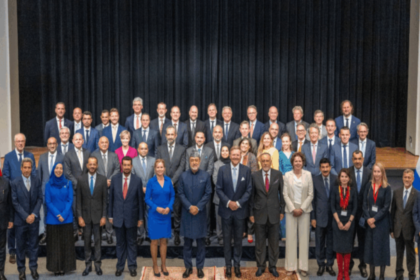India has set a goal of developing 100GW of nuclear power by the year 2047, marking a 12-fold increase from current levels. Finance Minister Nirmala Sitharaman announced this commitment, highlighting the importance of nuclear energy in ensuring the country’s energy security. To support this expansion, the government has proposed a nuclear energy mission, backed by ₹20,000 crore for R&D.
As part of this plan, India aims to establish at least 5 homegrown Small Modular Reactors (SMRs) by 2033. These SMRs are small, factory-manufactured nuclear reactors that can be installed in different locations, offering a more flexible and scalable approach to nuclear power generation.
Current Status of Nuclear Energy in India
At present, nuclear energy contributes only 1.8% to India’s total installed power capacity of 462GW. India’s energy sector has mainly focused on renewable energy sources like solar and wind due to government incentives and policy support. However, with increasing energy demands and the need for reliable power sources, nuclear energy is expected to play a more significant role in the coming years.
India’s nuclear energy program began expanding in the mid-1970s, but it saw a major boost after the Indo-US nuclear deal in 2008. This agreement led to the removal of nuclear fuel and technology sanctions imposed by the US on India. As a result, India was able to access advanced nuclear technology and nuclear fuel from global suppliers.
Following the deal, several civilian nuclear reactors were placed under the inspection of the International Atomic Energy Agency (IAEA), ensuring compliance with international safety standards. This move allowed India to increase its nuclear energy generation significantly after 2008.
Global Trends and the Revival of Nuclear Energy
Nuclear energy faced a decline worldwide after the Fukushima disaster in 2011. Many countries slowed down or halted their nuclear power programs due to safety concerns. However, recent developments have renewed interest in nuclear energy.
A report by the International Energy Agency (IEA) in 2025 highlights key reasons for this renewed focus:
– Concerns about energy security.
– Stronger government policies supporting nuclear expansion.
– Technological advancements making nuclear energy safer and more efficient.
– The need for reliable, low-emission power sources amid climate change concerns.
As a result, 2025 is expected to see global nuclear power generation reach an all-time high.
Currently, nuclear power accounts for about 10% of global electricity generation. Around 63 nuclear reactors are under construction worldwide, contributing to 70% of the planned capacity expansion.
China is leading this expansion, heavily relying on Russian and Chinese nuclear technology. While developed countries like the US and European nations face challenges with aging nuclear infrastructure, China is rapidly increasing its capacity and is expected to overtake both the US and EU in nuclear power generation by 2030.
In contrast, Europe has seen a decline in nuclear energy’s share of total electricity production. It fell from 34% in the 1990s to 23% in 2023, reflecting a shift towards renewable energy sources and public concerns over nuclear safety.
Top Nuclear Power Generating Countries (2023 Data)
Several countries have successfully integrated nuclear power into their energy mix:
– France – 65% of electricity from nuclear power
– Slovakia – 63%
– Ukraine – 50%
– Hungary – 45%
– USA – 18%
– India – Only 3% of total energy from nuclear sources
India’s goal of reaching 100GW of nuclear power by 2047 is ambitious but necessary to meet its growing energy needs. Achieving this target will require substantial investments, technological advancements, and global partnerships.
Small Modular Reactors (SMRs) could play a crucial role in this expansion, offering a safer and more efficient way to scale up nuclear energy production. Additionally, international collaborations with countries leading in nuclear technology will be essential for India to achieve its vision.







